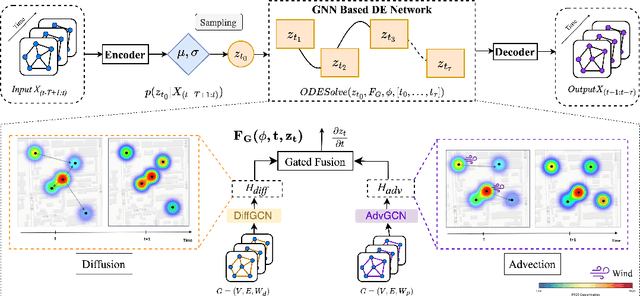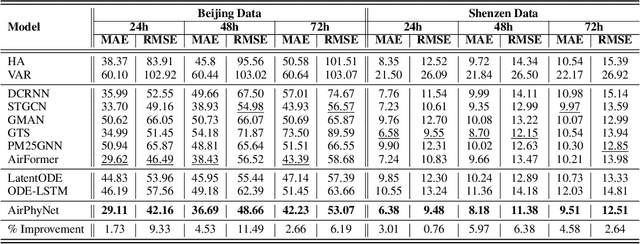Shili Xiang
Prompt-Enhanced Spatio-Temporal Graph Transfer Learning
May 21, 2024Abstract:Spatio-temporal graph neural networks have demonstrated efficacy in capturing complex dependencies for urban computing tasks such as forecasting and kriging. However, their performance is constrained by the reliance on extensive data for training on specific tasks, which limits their adaptability to new urban domains with varied demands. Although transfer learning has been proposed to address this problem by leveraging knowledge across domains, cross-task generalization remains underexplored in spatio-temporal graph transfer learning methods due to the absence of a unified framework. To bridge this gap, we propose Spatio-Temporal Graph Prompting (STGP), a prompt-enhanced transfer learning framework capable of adapting to diverse tasks in data-scarce domains. Specifically, we first unify different tasks into a single template and introduce a task-agnostic network architecture that aligns with this template. This approach enables the capture of spatio-temporal dependencies shared across tasks. Furthermore, we employ learnable prompts to achieve domain and task transfer in a two-stage prompting pipeline, enabling the prompts to effectively capture domain knowledge and task-specific properties at each stage. Extensive experiments demonstrate that STGP outperforms state-of-the-art baselines in three downstream tasks forecasting, kriging, and extrapolation by a notable margin.
AirPhyNet: Harnessing Physics-Guided Neural Networks for Air Quality Prediction
Feb 07, 2024



Abstract:Air quality prediction and modelling plays a pivotal role in public health and environment management, for individuals and authorities to make informed decisions. Although traditional data-driven models have shown promise in this domain, their long-term prediction accuracy can be limited, especially in scenarios with sparse or incomplete data and they often rely on black-box deep learning structures that lack solid physical foundation leading to reduced transparency and interpretability in predictions. To address these limitations, this paper presents a novel approach named Physics guided Neural Network for Air Quality Prediction (AirPhyNet). Specifically, we leverage two well-established physics principles of air particle movement (diffusion and advection) by representing them as differential equation networks. Then, we utilize a graph structure to integrate physics knowledge into a neural network architecture and exploit latent representations to capture spatio-temporal relationships within the air quality data. Experiments on two real-world benchmark datasets demonstrate that AirPhyNet outperforms state-of-the-art models for different testing scenarios including different lead time (24h, 48h, 72h), sparse data and sudden change prediction, achieving reduction in prediction errors up to 10%. Moreover, a case study further validates that our model captures underlying physical processes of particle movement and generates accurate predictions with real physical meaning.
 Add to Chrome
Add to Chrome Add to Firefox
Add to Firefox Add to Edge
Add to Edge